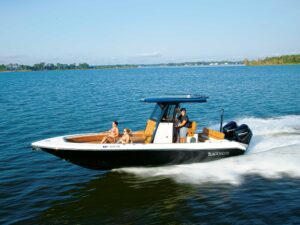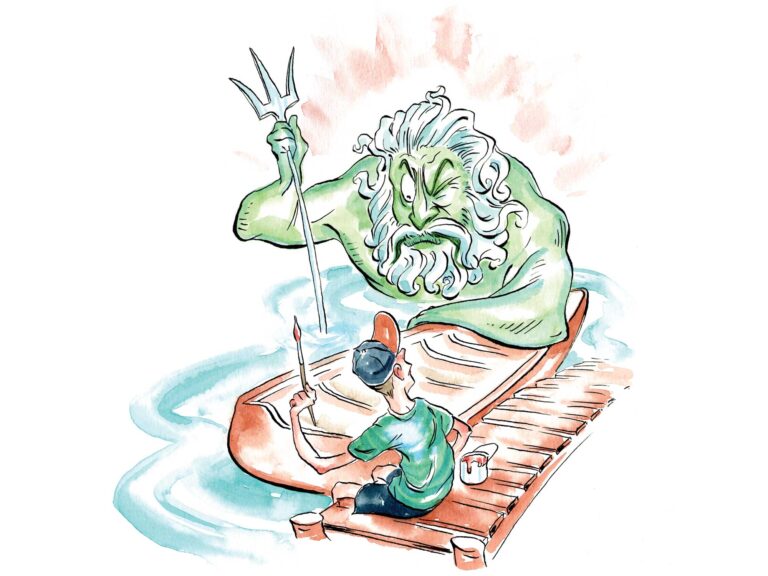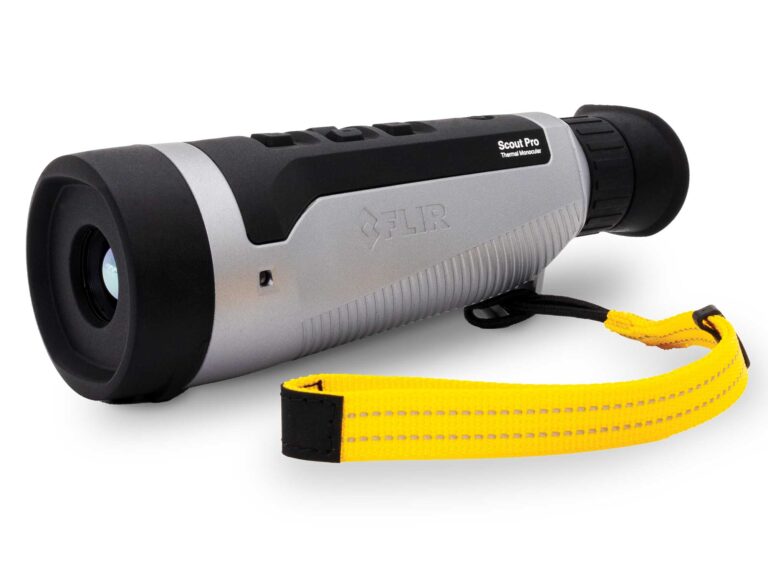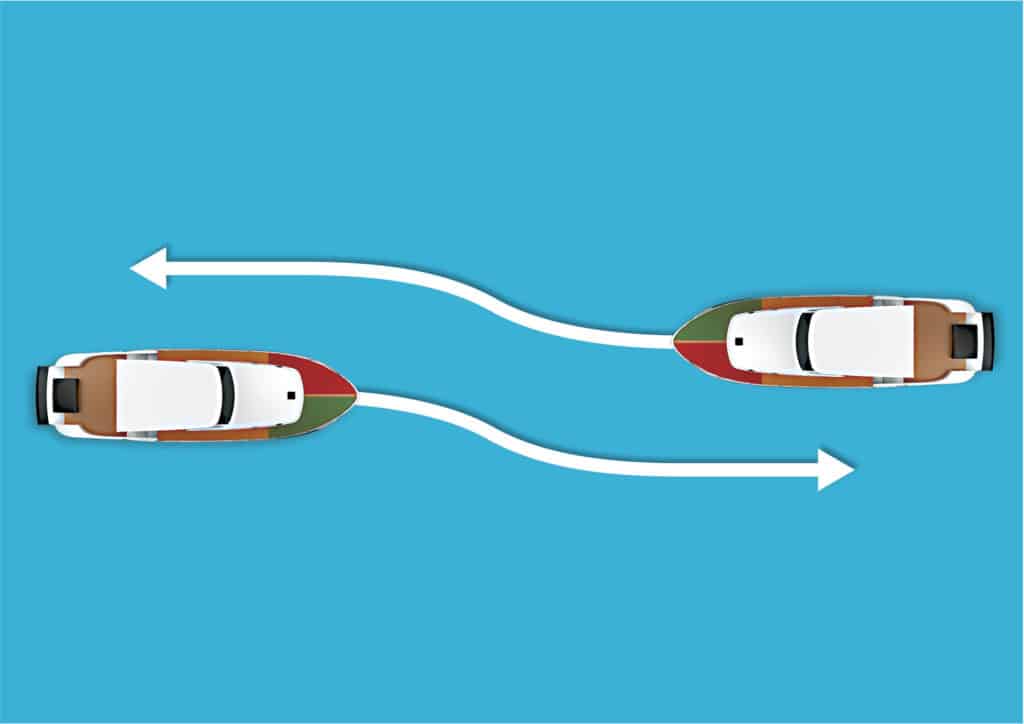
There is no right of way on the water. Every boater is obligated to do what is required to avoid collision. In any meeting of boats, one is deemed the stand-on vessel and the other the give-way vessel. The rules of the road explain the situation more completely and can be learned in a boating safety course. This article serves as a refresher and a reminder on how to handle some common meeting scenarios.
Meeting
While more common in a channel or narrow pass, head-to-head meetings can happen anywhere on the water. When encountering an oncoming boat head-on, the rule is simple: Each boat is a give-way or burdened vessel and should stay to its right, altering course to starboard and allowing each craft to pass to the port (left) side of the other boat.
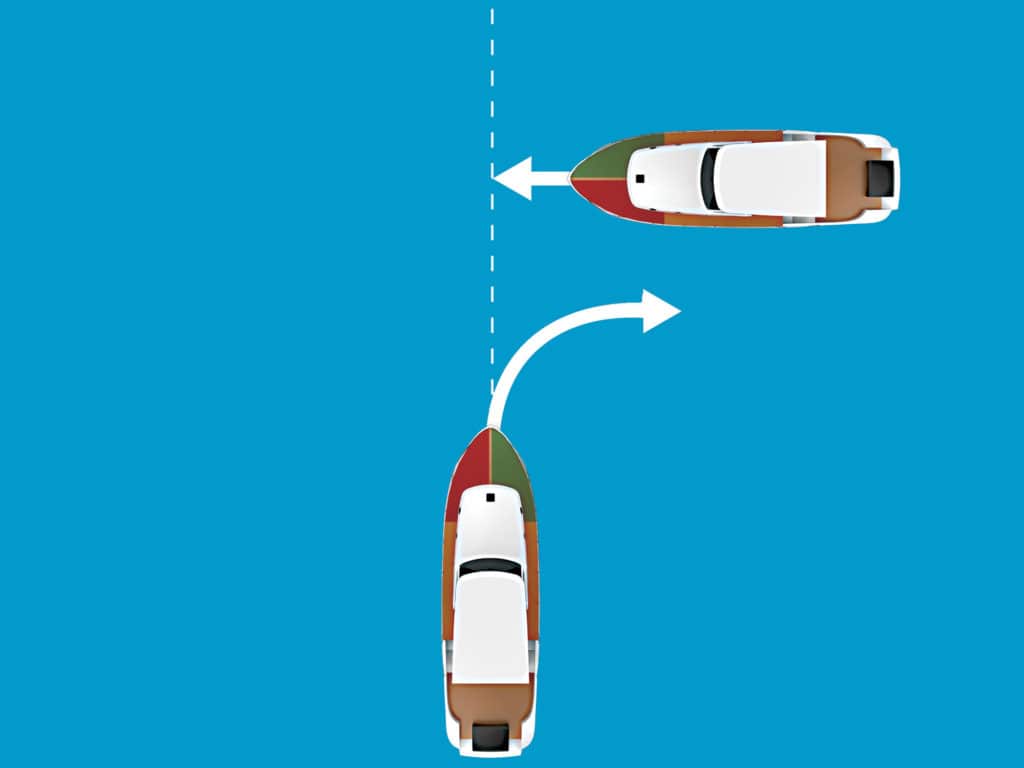
Crossing
If the other boat is to your starboard (right), it’s considered the stand-on or privileged vessel and is obligated to maintain course and speed. Your boat is the give-way vessel and is obligated to slow or alter course to pass behind it, ideally. If the boat intersecting your path is to port (left), it’s the give-way vessel. It’s obligated to yield while you’re obligated to maintain course and speed.
Overtaking
When overtaking another boat, keep in mind that the other boat is the stand-on vessel and yours is the give-way vessel. Your first move? Determine to which side of that craft is the safest to pass. Consider oncoming traffic, waterway markers, obstacles, or even bends in the channel. Once you have a clear path with good forward visibility, increase your speed enough so that you can safely overtake the other vessel, giving the craft a wide berth.
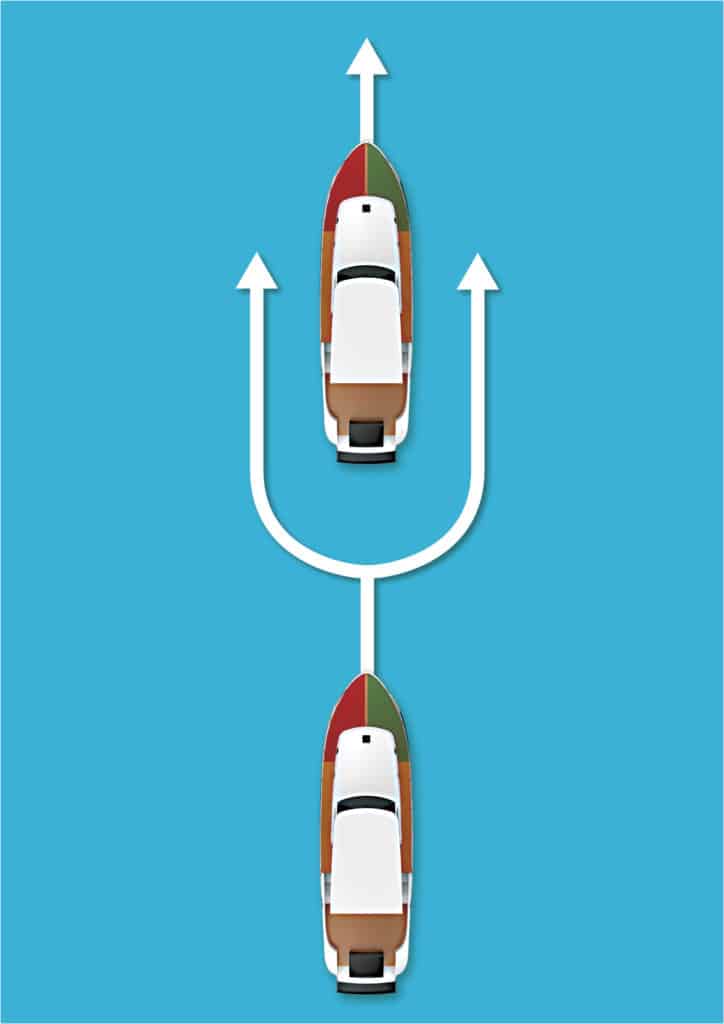
Encountering Kayaks, Sailboats, Etc.
Some vessels will almost always be the stand-on boat, and you must yield no matter the scenario, unless doing so will create an unsafe situation. Typically, this list includes paddlecraft and sailboats not under power, but it also includes larger craft, like ships or freighters. Realize these craft are not as maneuverable as most powerboats and, as such, the powerboat is deemed the give-way vessel.
Read Next: Boating Navigation Basics
When the Other Guy Doesn’t Know the Rules
No matter if you are the stand-on or give-way vessel, always be prepared in case the other boater doesn’t respond as you expect. Operate defensively, and be ready to yield, slow speed or change course to avoid any potentially dangerous situation. A good tip? Give other boaters plenty of space—100 feet or more—to allow enough time and distance to properly react and avoid an accident.
Know Your Colors
Do you know how to handle these scenarios at night, when you can’t see another boat, let alone determine its direction? Know your colors. Boats are required to display a green light to starboard (right) and a red light to port (left) at their bow, and most boats must display a single all-around white light at the stern. This combination of lights will help you determine which direction a boat is moving and if it’s likely to cross your path.


